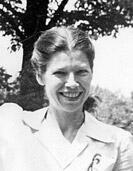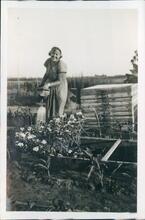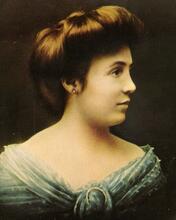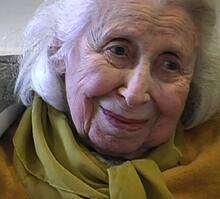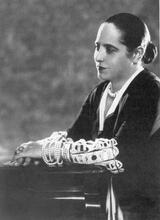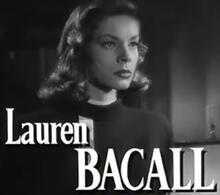Jo Copeland
After graduating from the Parsons School of Design, Jo Copeland was working as a fashion designer by age twenty. In the 1920s, when Copeland began her fifty-year career, “American fashion” did not exist, as most clothing made in the United States sought to mimic European styles. Copeland developed her own uniquely American styles, using luxury materials in unconventional ways. Her signature “two-piece suit” was actually a dress and jacket that di the work of suit, blouse, slip, and bra. Her luxurious designs attracted buyers who longed for glamour after the lean years of the Great Depression.
Early Life and Education
Jo Copeland was an innovative fashion designer who was noted for using unusual fabrics in unusual ways.
Copeland was born in New York City in 1899, the third child of Samuel and Minna Copeland. Her mother, a talented pianist, died giving birth to Jo. Her father, a scholar, art lover, and traveling salesman, soon remarried, and there eventually were nine children in the family.
Copeland’s artistic temperament was recognized early, on a night of high drama. She was sent to do the dishes. Her stepmother waited for the comforting clatter of a mountain of plates sloshing in soapsuds. Instead, there came a forlorn, nonstop wail of artistic protest. Sam Copeland rushed into the kitchen. Jo was up to her elbows in suds, howling into the steam. He lifted her arms high above the sink and proclaimed, “These hands will never touch dishwater again!” And they never did.
Copeland attended the Art Students League and graduated from the Parsons School of Design. By age twenty, she was working as a designer and helping to put her older brothers through Harvard Law School. She married Edward Regensburg in 1923 (they divorced in 1944), and they had two children: Anthony and Lois (Gould). She married a second time, to Mitchell Benson, in 1953; this marriage also ended in divorce.
Fashion Design Career
In the 1920s, when Copeland began her fifty-year career, there was no such thing as “American fashion.” The best dresses made in the United States carried labels with names like “Parisian Modes,” and they were copies of the latest Paris styles. Copeland helped lead the fledgling United States fashion industry out of slavery to Paris. She did travel to Paris and throughout Europe, but her creations were all her own, particularly what was called the “two-piece suit,” worn without a blouse. Copeland would have quibbled: It wasn’t a suit; it was a costume, an ensemble—a dress and jacket so artfully tailored, so subtly supported by fine silk underpinnings, that it did the work of suit, blouse, slip, and bra. A fabulous collar—fur or lace encrusted with Austrian rhinestones—was actually part of the dress beneath. Unjacketed, a Jo Copeland costume was even more stunning.
Copeland once said that she designed “for the American woman, whoever she is.” The woman she had in mind was in fact much like herself. She used her own figure—slim, with a tiny waist and narrow shoulders—as a model. Nor was a Jo Copeland creation cheap. But her customers, especially after the Depression, were starved for glamour, and they found it in Copeland’s designs. As she put it, “My consistent approach was to strive for perfection with as little compromise as possible. I wanted to give women clothes that would enhance them, with a certain excitement. My clothes proved to have a long life, more than justifying their original cost.”
Jo Copeland was on the faculty of the Fashion Institute of Technology, president of the Manhattan Industrial Home for the Blind, and the advisory board of the Girls’ Club of New York. She was the recipient of many awards, including the Neiman-Marcus award for the best designer of the year (1944), a citation from the Philadelphia Museum of Art, and an award from the Federation of Jewish Philanthropies.
Jo Copeland died on March 20, 1982, in New York City.
Obituary. NYTimes, March 21, 1982.
Who’s Who in America (1980–1981).


